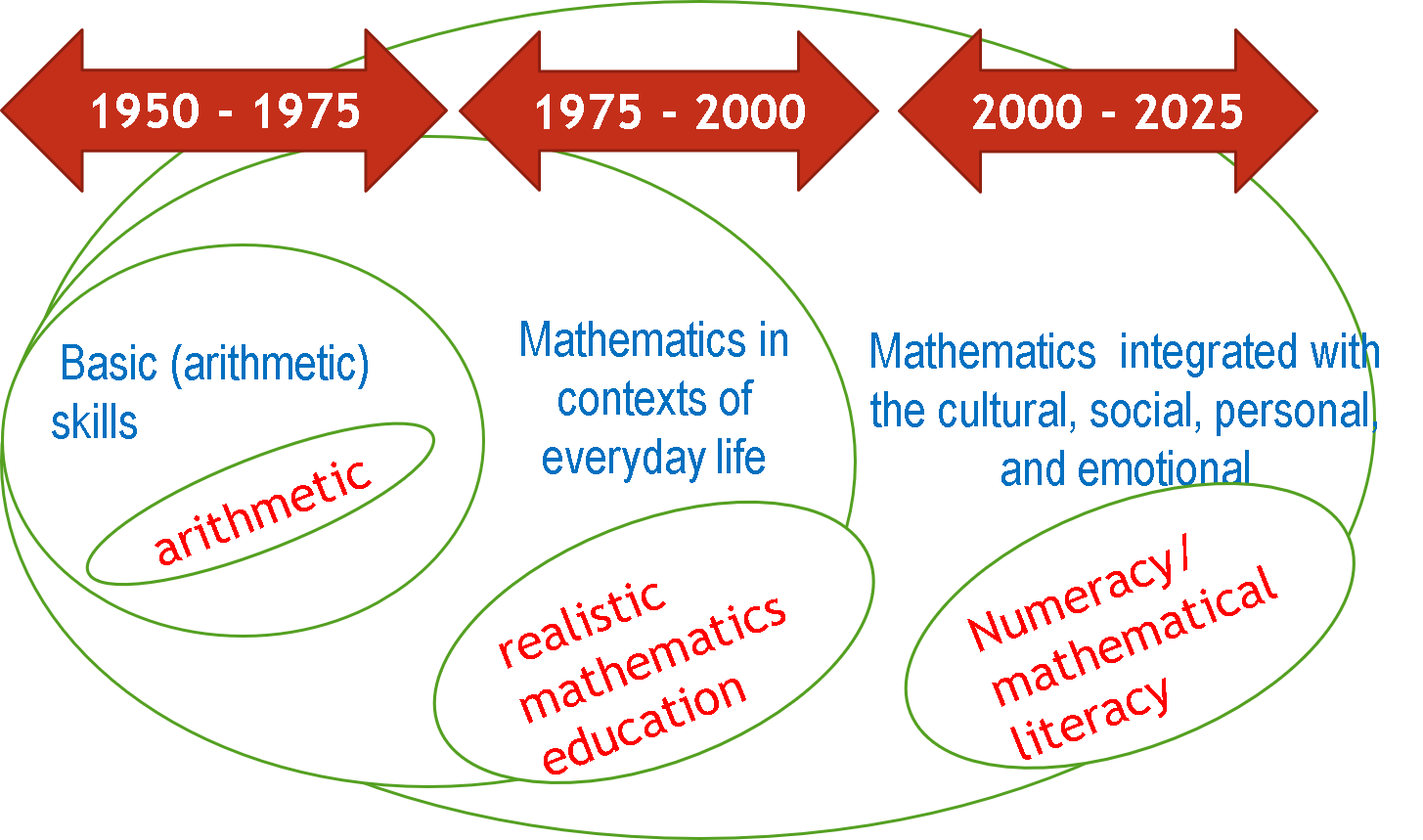After WWII, in the third quarter of last century (1950-1975), there was a broad consensus that mathematics in primary education should consist of practicing operations on bare numbers according to fixed procedures by hand and on paper: adding, subtracting, multiplying and dividing. The long division is the iconic image of this perspective.
Was that a relevant activity? Yes, very relevant. Before 1975 there were simply no calculators and everything, really everything, had to be calculated by hand and with pen and paper. Every factory built in the reconstruction of society after WWII, every rocket shot to the moon, every conveyor belt production process was created by engineers who carried out complex calculations with pen-and-paper. But also all retail transactions were accompanied by manual calculations. However, the quantitative side of the world today looks very different and bare numbers have almost completely lost their relevance.
In the fourth quarter of last century (1975 – 2000) all kinds of mechanical and electronical tools made its appearance which made manual work for a large part superfluous: calculators, electronic cash registers, spreadsheets, et cetera became part and parcel of daily life activities. In education, the desire arose not only to learn the pen-and-paper skills, but also to teach where and how these skills could be used to solve problems from daily life. Situations from reality became part of education in many forms: applications, simulations, contexts, projects, … The emergence of Realistic Mathematics Education, for instance, is an example of this perspective (see for more information …..
By the way, this was not a completely new idea; Willem Bartjens’ book on arithmetic De Cijfferringe is also full of commercial arithmetic, practical tasks of great societal relevance. Between 1600 and 1700 the book easily reached its hundredth edition. Bringing reality into the classroom is not always easy for teachers and schools. In many situations it is reduced to making assignments for the textbook, in which real situations are described by words: word problems. In the last century, in education the use of context, was actually the same as using verbal descriptions of reality. This of course created problems of its own.
In the first quarter of this century (2000-2025), a third concept is rapidly gaining popularity worldwide. From this perspective students have to be “numerate” in order to deal with the quantitative side of the world. Numeracy takes the person and his/her relationship with the world as a starting point. The quantitative side of the world is so rich, so varied and sometimes so complex, that people need a very extensive repertoire to cope with it. From this perspective, numeracy is an inseparable part of personal development. Immediately after birth, the first interactions of the youngborn with numbers, patterns and structures in time and space, are discernible. Our brains are sais to be hard-wired to deal with numbers, structures and patterns. The body supports numeracy development by moving and relating to the threedimensional physical environment.
Interest in the psychological side of mathematics learning is also increasingly the subject of study. Many difficulties student have with mathematics and numeracy can be associated by psychological problems caused by educational settings of selection and strict right/wrong regimes (see for example the literature on Math Anxiety). It is good to realise that math anxiety is not a student characteristics, but rather a educational characteristic.
Part of numeracy is also how to deal with the avalanche of quantitative data that today’s society produces and uses for economic traffic, the political process and daily life. It is mainly about drawing conclusions from numerical information. Interpreting, analyzing, organizing, estimating, structuring, selecting and critically considering quantitative information are skills associated with numeracy. Appropriate education in this area is developing worldwide.
However, the development of rich and modern numeracy is slow. In politics and the (social) media, the perspective from 1950-1975 is often still dominant.

